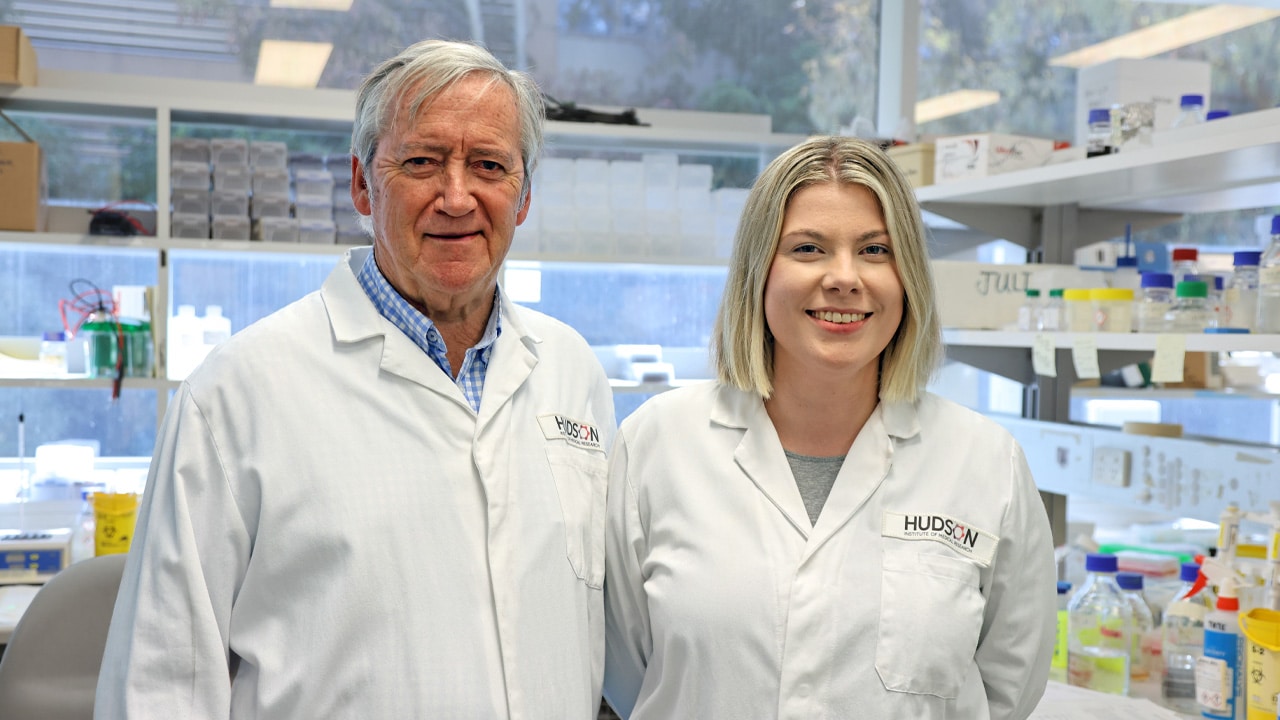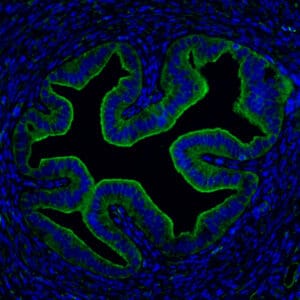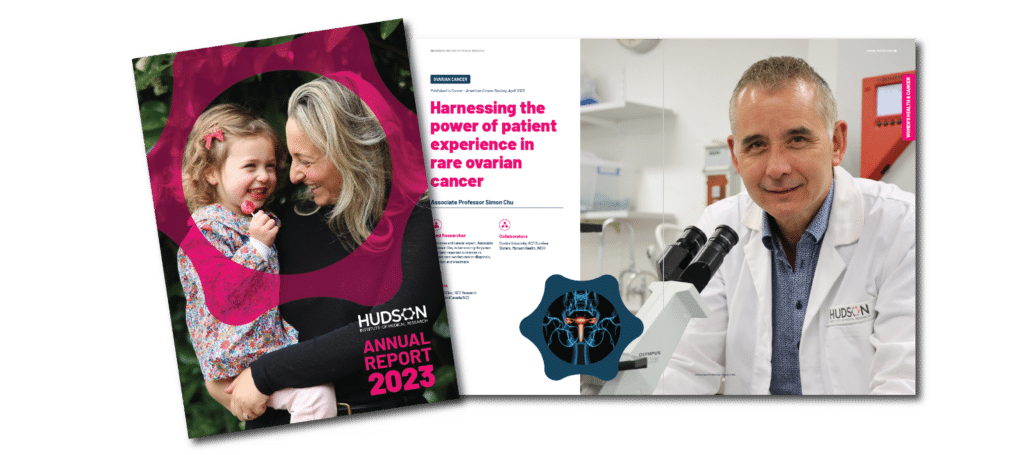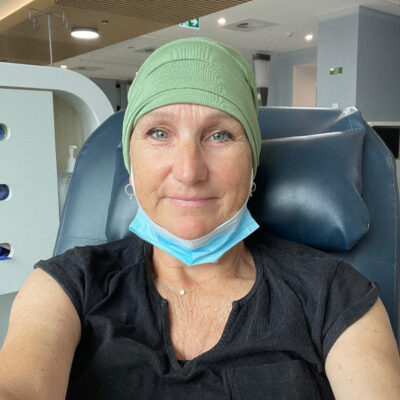Ovarian cancer breakthrough: tiny protein, big impact
By Rob Clancy, staff writer. Reviewed by Professor Paul Hertzog

Increasingly, cancer treatments focus on harnessing the body’s own resources – the innate immune system – but one cancer has proven more elusive than most.
Key points
- Researchers discovered that Interferon Epsilon (IFNε) can instruct immune cells to target and kill ovarian cancer cells, offering a potential new immunotherapy treatment.
- IFNε activates multiple layers of the immune system, providing a multifaceted defence against ovarian cancer by creating several ‘roadblocks’ to tumour growth.
- Unlike typical interferons, IFNε is always present in epithelial cells lining tissues and organs, the types of cells where ovarian cancer arises.
Nearly half of the women diagnosed with ovarian cancer lose their lives within five years and there have been no new effective treatments for more than half a century.
Ovarian cancer survival rates are well below the average for all cancers because
- The disease is often not detected until the advanced stages, when the cancer has metastasised
- Chemotherapy typically becomes ineffective over time.
Metastasis is the ultimate cause of death for most ovarian cancer patients – and where new treatments are desperately needed.
IFNε: a formidable foe
While other cancers have responded to evolving treatments, such as immunotherapy, ovarian cancer remains a formidable foe. New treatments are desperately needed, which makes the work of Professor Paul Hertzog and Dr Nicole Campbell so much more compelling.
Their research, published in the esteemed journal, Nature, showed that the innate immune system produces a powerful weapon against ovarian cancer, interferon epsilon (IFNε), a weapon just waiting to be harnessed to deliver an effective immunotherapy treatment option.
“The results of this study were striking. IFNε stops the spread of secondary ovarian cancer by instructing immune cells to target and kill the cancer cells involved,” Dr Campbell said.
A multifaceted defence against ovarian cancer
The discovery is even more encouraging because of the clever, multi-pronged defence that IFNε takes, throwing up at least three ‘roadblocks’ to ovarian cancer.
“IFNe activates multiple layers of the immune system, and at different stages, to fight tumours. Most cancer treatments work in one way, either to kill the tumour or to activate the anti-tumour immune cells.
“This means that any IFNe-based drugs could act in multiple ways to block tumours,” said Dr Campbell.
Why is IFNε so special?

The story of IFNε goes back 20 years, to 2004, when it was discovered in Prof Hertzog’s lab.
“IFNε is part of a family of proteins called interferons that ‘interfere’ with invaders like viruses and bacteria. Interferons also kill tumour cells and activate anti-tumour immune responses,” Prof Hertzog said.
While interferons were discovered in the 1950s, the discovery of IFNε was relatively recent.
“IFNε had evaded scientists because it behaves very differently to other IFNs,” said Prof Hertzog.
“’Typical’ IFNs are produced to fight infection and are found in the blood in large quantities. In comparison, IFNε doesn’t increase during infection; it is always present in epithelial cells that line tissues and organs, and it is not detectable in blood.
“In 2009 we discovered that IFNε is produced by epithelial cells that line organs such as the female reproductive tract.
“These are the type of cells where cancer arises, and in this recent discovery we identified that, in the most common ovarian cancer, these cells have lost the ability to produce IFNe,” Prof Hertzog said.
The team, including Dr Zoe Marks and Dr Nollaig Bourke, established that IFNε serves to protect the healthy body against the development of ovarian cancer, meaning it could potentially be used as a new way to fight the disease.
Next steps
The team is now aiming to understand how IFNε modulates the immune response to ovarian cancers, as well as
- How best to deliver it for maximal and safe effect
- How to identify which patients will benefit
- Whether it is best used in combination with other treatments.
In further recognition of this work’s significance, Dr Campbell received a grant from the US Defense Department to continue some of this work.
“We are incredibly proud of this discovery and the global scientific recognition. In the next stage we will be exploring opportunities to translate it into patient treatments,” Prof Hertzog said.
There is one crucial ingredient required for that to happen: funding. Whether it comes from research grants or a commercial partner, the fact is it will take a serious financial commitment to take this discovery from the laboratory to patients, where it can really make a difference.

Read more stories like this in the
2023 Annual Report
Collaborators | Peter McCallum Cancer Centre; WEHI; Imperial College of London (UK); Trinity College Dublin, The University of Dublin (Ireland)
This research was supported by | NHMRC; US Department of Defense
Journal | Nature
Title | Interferon-ε is a tumour suppressor and restricts ovarian cancer
View publication | https://www.nature.com/articles/s41586-023-06421-w
In this article
About Hudson Institute
Hudson Institute’ s research programs deliver in three areas of medical need – inflammation, cancer, women’s and newborn health. More
Hudson News
Get the inside view on discoveries and patient stories
“Thank you Hudson Institute researchers. Your work brings such hope to all women with ovarian cancer knowing that potentially women in the future won't have to go through what we have!”






